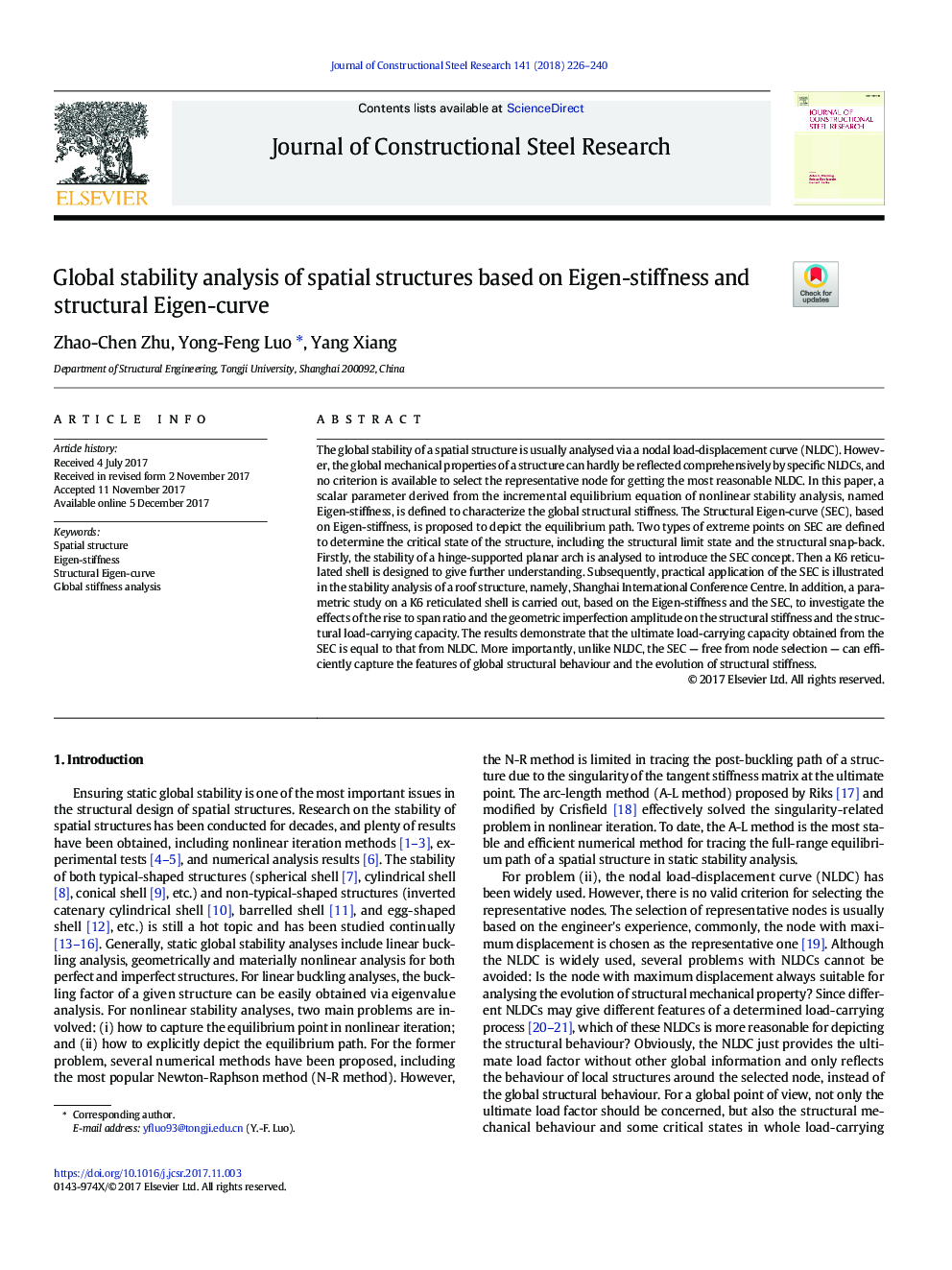| Article ID | Journal | Published Year | Pages | File Type |
|---|---|---|---|---|
| 6751164 | Journal of Constructional Steel Research | 2018 | 15 Pages |
Abstract
The global stability of a spatial structure is usually analysed via a nodal load-displacement curve (NLDC). However, the global mechanical properties of a structure can hardly be reflected comprehensively by specific NLDCs, and no criterion is available to select the representative node for getting the most reasonable NLDC. In this paper, a scalar parameter derived from the incremental equilibrium equation of nonlinear stability analysis, named Eigen-stiffness, is defined to characterize the global structural stiffness. The Structural Eigen-curve (SEC), based on Eigen-stiffness, is proposed to depict the equilibrium path. Two types of extreme points on SEC are defined to determine the critical state of the structure, including the structural limit state and the structural snap-back. Firstly, the stability of a hinge-supported planar arch is analysed to introduce the SEC concept. Then a K6 reticulated shell is designed to give further understanding. Subsequently, practical application of the SEC is illustrated in the stability analysis of a roof structure, namely, Shanghai International Conference Centre. In addition, a parametric study on a K6 reticulated shell is carried out, based on the Eigen-stiffness and the SEC, to investigate the effects of the rise to span ratio and the geometric imperfection amplitude on the structural stiffness and the structural load-carrying capacity. The results demonstrate that the ultimate load-carrying capacity obtained from the SEC is equal to that from NLDC. More importantly, unlike NLDC, the SEC - free from node selection - can efficiently capture the features of global structural behaviour and the evolution of structural stiffness.
Keywords
Related Topics
Physical Sciences and Engineering
Engineering
Civil and Structural Engineering
Authors
Zhao-Chen Zhu, Yong-Feng Luo, Yang Xiang,
